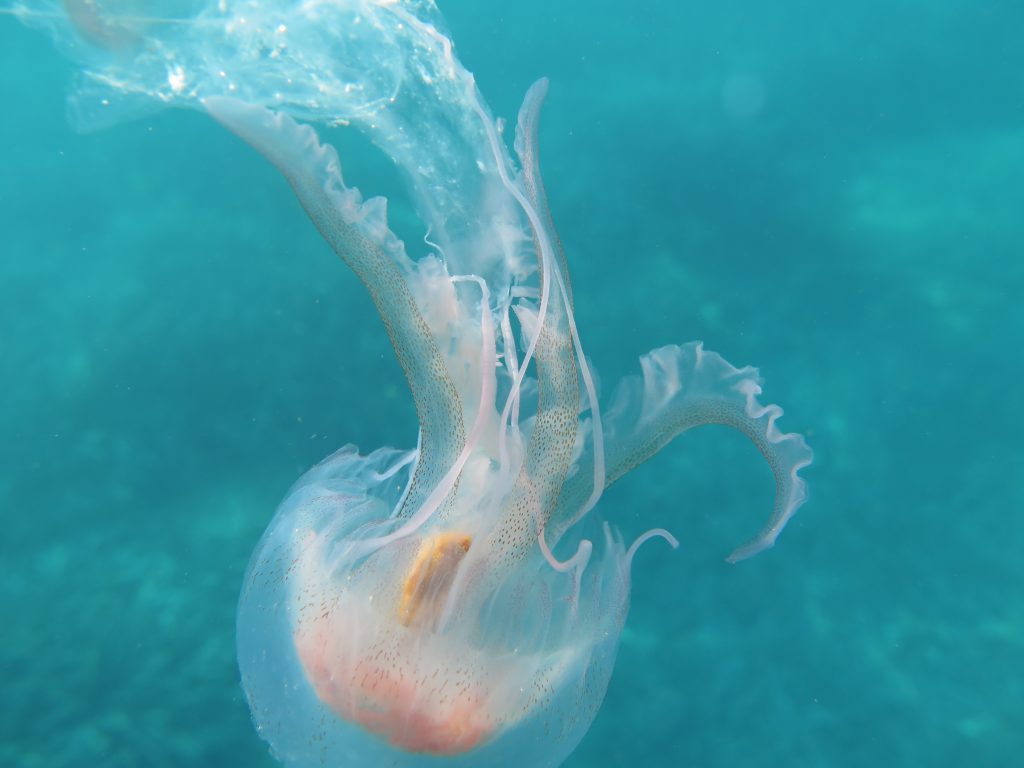
Villefranche Sur La Mer:

This fall I had the wonderful luck to stay in Villefranche Sur la Mer, an ancient coastal town on the Mediterranean right after tourist season ended for a week. I first learned about Villefranche because of its famous marine biology station where many of the Tara, scientists, engineers and microscopists work. It was a thrill to be there and I even made some discoveries. Below is a photo journal of some of the highlights and things I experienced.

One the most memorable this experienced upon my arrival was this exquisite medusa in the bay just out side of Villefranche marine Biological station. I will never forget this beauty as I was photographing her diaphnious tendrils I was stung very badly from the rear!
The bay of Villefrance Sur la Mer is a very special bay in the Mediterranean in the South of France where Ernst Haeckel, the famous turn of the century scientist and artist first was exposed to and drew Radiolarians- the tiny single celled protist star shaped plankton with the silica skeletons we have come to know and love.
The reason that the bay has such an extraordinary array of microscopic creatures is that there is a steep drop off in the water one nautical mile off the coastline that extends to the south to form a 500 m (1700 ft) abyss known as the undersea Canyon of Villefranche . This provides a rich diversity of marine life on both a microscopic and mega-scopic level. The invisible world of plankton contains not only surface water plankton but also plankton deep water plankton from the abyss.

Above View of Bay from Marine Biological Station, in Villefranche Sur La Mer one lives with the Sea…
Above the Bay at Sunrise.

Above a sculpture of a Lithoptera Plankton I created in glass and lead crystal discovered in the Bay of Villefranche Sur La Mer, that I made a sculpture of. This plankton is very special because it is both an animal and a vegetable…or as Christian Sardet puts it in his “Plankton Chronicles” a “vegamal” existing as an single cell animal cell or protist that also hosts photosynthetic algae which fuels the cell. Its skelton is formed from a rare form of calcium carbonate called strantium and why it travels up and down the water column daily is still a mystery to the scientists that study it, namely Colomban de Vargas!

Above Drawing of Lithoptera by Ernst Heackle
Below me with an original Haeckle manuscript in the library at Villefranche Sur La Mer Marine biological station. I was so inspired I could not believe my good fortune!

So I actually rented a zodiac and collected some of my own plankton, I could not resist!Below my boat driver!

The tiny black specs in the white container are plankton!

I was able to look at directly afterwards through the scope and it was AMAZING! So many radiolarians I could literally see through the scope the same kinds that Ernst Haeckle drew!
Below a Radiolarian…

Below a Radiolarian on the left and a Diatom on the right.

Another Radiolarian…

A Radiolarian on the left and several strands of micro-plastic on the left.

Sadly there was also a lot of plastic. Below is a short film I made of a cluster of Daphnia plankton ensnared it micro filaments of plastic. This kind of blob is what fish consume and how plastic gets into the food web.
Daphnia Plankton with Micro Plastics Villefranche Sur Mer Nov 2015 from Mara Haseltine on Vimeo.

